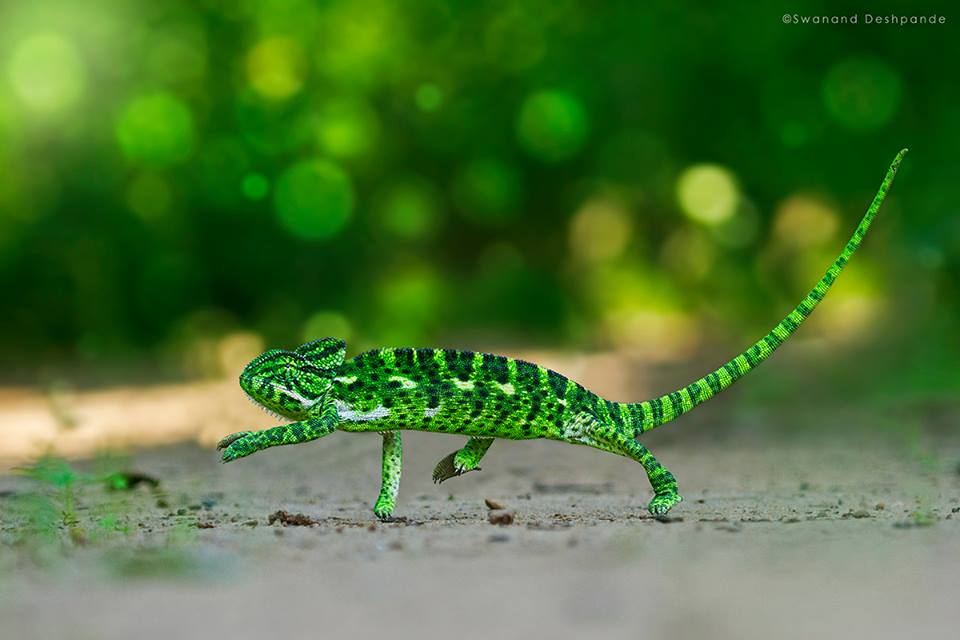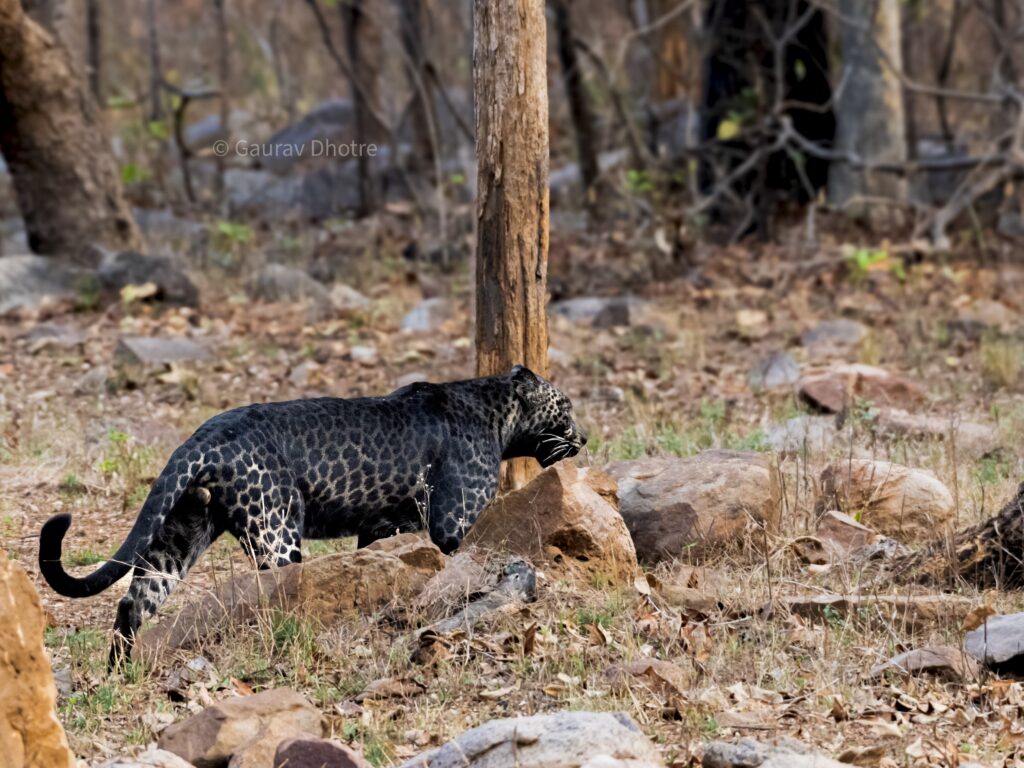PRIMATES IN INDIA
Here’s a quick guide for everything you need to know about primates in India
India, with its vast and varied landscapes, is home to an extraordinary diversity of wildlife. Among its most intriguing inhabitants are the primates—our closest relatives in the animal kingdom.
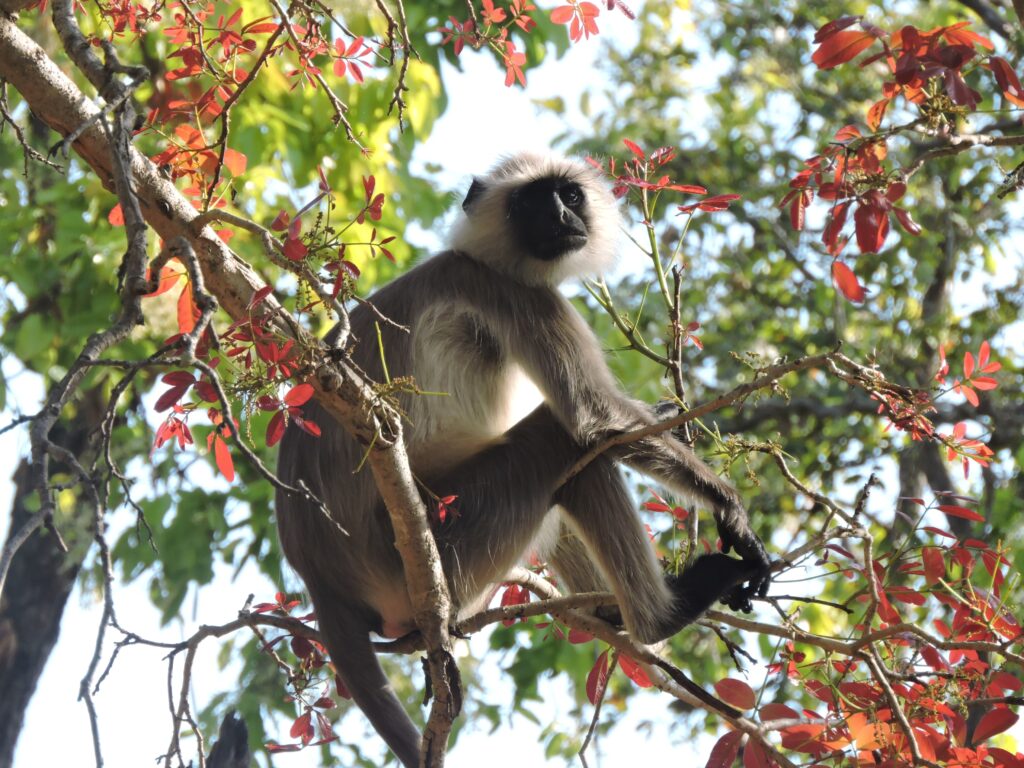
Diverse Lineage of primates in india
Primates, one of the most diverse and widespread orders of mammals, include over 500 species globally, ranging from the tiny mouse lemurs of Madagascar to the great apes of Africa and Southeast Asia. These species inhabit a variety of ecosystems, from tropical rainforests to savannas and temperate forests, showcasing an incredible range of adaptations in behavior, diet, and social structures.
Number of primate species in India
India is home to 23 of these primate species, making it a significant region for primate biodiversity. This diverse group includes macaques, langurs, lorises, and gibbons, each playing a crucial role in the ecosystems they inhabit, while also holding cultural significance in many parts of the country. The primates of India include:
| Serial number | Common name | Species | Conservation Status | ||
| Gibbon | IUCN | Population Trend | WPA(P)A | ||
| 1. | Hoolock Gibbon | Hoolock hoolock | Endangered | ↓ | I |
| Loris | |||||
| 2. | Grey Slender Loris | Loris lydekkerianus | Endangered | ↓ | I |
| 3. | Bengal Slow Loris | Nycticebus bengalensis | Near threatened | ↓ | I |
| Langurs | |||||
| 4. | Gee’s Golden Langur | Trachypithecus geei | Endangered | ↓ | I |
| 5. | Kashmir Gray Langur | Semnopithecus ajax | Endangered | ↓ | II |
| 6. | Phayre’s Leaf-monkey | Trachypithecus phayrei | Endangered | ↓ | I |
| 7. | Capped Langur | Trachypithecus pileatus | Vulnerable | ↓ | I |
| 8. | Nilgiri langur | Semnopithecus johnii | Vulnerable | — | I |
| 9. | Tufted Gray Langur | Semnopithecus priam | Near Threatened | ↓ | II |
| 10. | Tarai Gray Langur | Semnopithecus hector | Near Threatened | ↓ | II |
| 11. | Black-footed Gray Langur | Semnopithecus hypoleucos | Least concern | ↓ | II |
| 12. | Nepal Gray Langur | Semnopithecus schistaceus | Least concern | ↓ | II |
| 13. | Northern Plains Gray Langur | Semnopithecus entellus | Least concern | ↓ | II |
| Macaques | |||||
| 14. | Arunachal Macaque | Macaca munzala | Endangered | ↓ | Not listed |
| 15. | Lion-tailed Macaque | Macaca silenus | Endangered | ↓ | I |
| 16. | Long-tailed Macaque | Macaca fascicularis | Endangered | ↓ | I |
| 17. | White-cheeked Macaque | Macaca leucogenys | Endangered | ↓ | Not listed |
| 18. | Bonnet Macaque | Macaca radiata | Vulnerable | ↓ | II |
| 19. | Northern Pig-tailed Macaque | Macaca leonina | Vulnerable | ↓ | II |
| 20. | Stump-tailed Macaque | Macaca arctoides | Vulnerable | ↓ | II |
| 21. | Assamese Macaque | Macaca assamensis | Near Threatened | ↓ | II |
| 22. | Tibetan Macaque | Macaca thibetana | Near Threatened | ↓ | Not listed |
| 23. | Rhesus Macaque | Macaca mulatta | Least concern | Unknown | Not listed |
Table above: (Singh et al., 2020) (https://www.iucnredlist.org/).
1. GIBBONS
Hoolock Gibbin (Hoolock hoolock)

The Hoolock Gibbon is India’s only ape and the world’s second-largest gibbon, also known as the white-browed gibbon due to its prominent white brows.
This agile tree-dweller is recognized more for its unique calls. Its long arms, nearly twice the length of its legs, assist in swinging through the canopy. Newborns are initially creamy white or yellowish but turn dark brown within months.
By age two, both sexes are entirely black, with males developing a noticeable pouch by four. Females may have lighter patches during their sub adult phase, eventually becoming golden blonde with white markings.
Traditionally, two gibbon species—western and eastern—were recognized based on coat differences. However, a recent genetic study by G. Umapathy’s team at CCMB in Hyderabad has revealed they are actually the same species, as coat variations alone are not sufficient for classification.
(Source; Mongabay; Not two, only one species of hoolock gibbon in India: study;Roopak Goaswami)
2. LORRIS
a. Grey Slender Loris ( Loris lydekkerianus)

The Slender Loris is a slim relative of the Slow Loris, distinguished by a subtle spinal stripe. It has two subspecies: the Mysore Slender Loris (L.I. lydekkerianus) , which is larger and greyer, and the Malabar Slender Loris (L.l. malabaricus), known for its reddish-brown color and closely spaced round eye patches, unlike the oval, widely spaced patches of the Mysore variety.
The Malabar Slender Loris inhabits the western slopes of the Western Ghats, south of the Tapti River, while the Mysore Slender Loris is found south of the Godavari River in the Eastern Ghats and on the eastern slopes of the southern Western Ghats. Their ranges may overlap in the Western Ghats, especially south of the Palghat Gap.
b. Bengal Slow Loris (Nycticebus bengalensis)
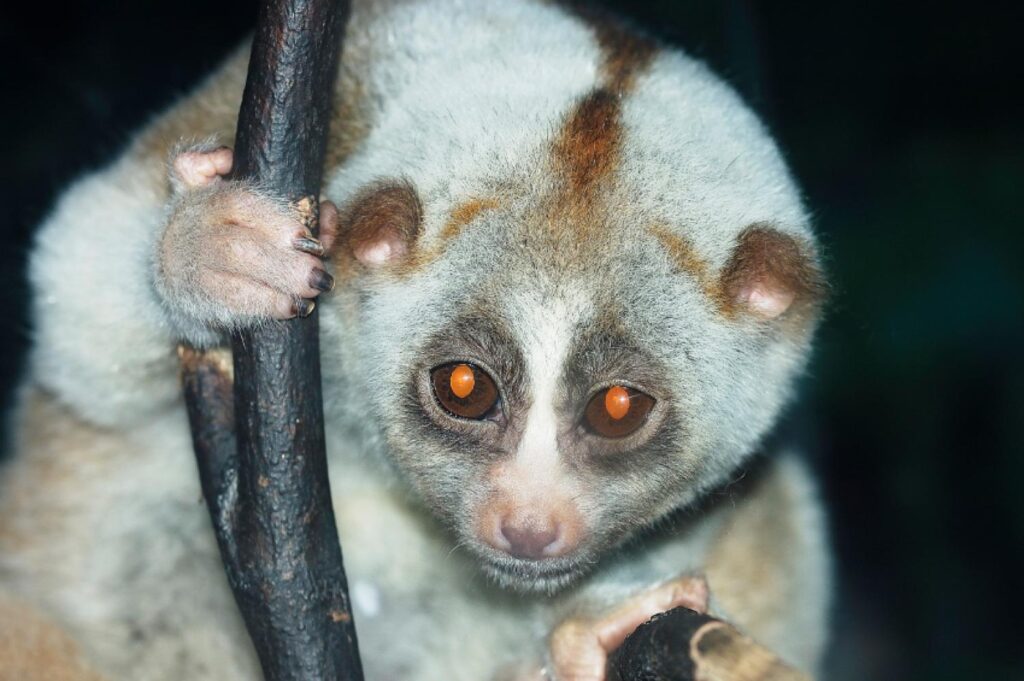
In Bengal slow lorises the males are typically larger than females and have strikingly prominent eyes, with fur that varies from ash-gray to buff-yellow. Notably, they are characterized by their lack of a tail. These animals are primarily found in the northeastern region, especially abundant south of the Brahmaputra River.
3. LANGURS
a. Gee’s Golden Langur (Trachypithecus geei)

Gee’s Golden Langur, also known as the leaf monkey, displays different coat colors throughout the year. In the non-breeding season, their fur is cream to off-white, while it transforms into a vivid golden-orange or deep golden hue during the breeding season. Their faces, palms, and soles are black, complemented by golden whiskers. Females often have a more vibrant golden coloration on their rear. These primates are typically located in the region between the Manas and Sankosh rivers, particularly in Kokrajhar, Bongaigaon, and Dhubri in Assam.
b. Kashmir Gray Langur (Semnopithecus ajax)

The kashmir gray langur also known as the dark-eyed Himalayan gray langur, possess long, silky gray fur, complemented by a dark mane and dark hands, along with a whitish underside. These animals are found in Himachal Pradesh (Chamba) and southern Jammu and Kashmir (Kishtwar).
c. Phayre’s Leaf-monkey (Trachypithecus phayrei)

These species, commonly known as “chasma bandar” due to their striking white eye patches on a black face, have long tails and a slate-grayish body that darkens towards the limbs, with a lighter belly. Males and females look quite alike, although females display yellowish pubic callosities while males have flesh-colored ones. They are found in the Cachar, Hailakandi, and Karimganj districts of southern Assam, as well as in Tripura and Mizoram.
d. Capped Langur (Trachypithecus pileatus)

This species is easily identified by its uniquely colored cap, grayish dorsal side, and a long tail that darkens at the tip. In India, four subspecies are recognized based on their belly colors: T.p. durga, which has an orange belly; T.p. tenebricus, where males have a creamy belly and females display a cream with reddish-orange tinge; T.p. brahma, known for its pale cream belly that leans towards white; and T.p. pileatus, which features a pale, creamy-golden belly.
T.p. durga is the most widely distributed in the highlands, primarily located south and east of the Brahmaputra River, including Meghalaya (Garo, Khasi, and Jaintia Hills), Assam (Karbi Anglong, Dima Hasao, and Cachar), as well as parts of Nagaland, Tripura, and Arunachal Pradesh, noted for its creamish-red whiskers and red-tinged underside.
T.p. pileatus is found in central and upper Assam and the lowlands of Nagaland, sharing its habitat with T.p. durga but separated by elevation. T.p. brahma is limited to the highlands of Arunachal Pradesh, north of the Brahmaputra River, while T.p. tenebricus occurs in Assam, north of the Brahmaputra, and Bhutan, ranging from Manas in the west to Nameri in the east.
e. Nilgiri langur (Semnopithecus johnii)

These langurs, also known as John’s leaf monkey are recognizable by their yellow-tinted fur and long, shiny black coats. They reside in the Western Ghats, stretching from Kodagu in the north to the Kanyakumari Hills in the south. Notably, langurs north of the Palghat Gap have been observed to have more grizzled white hair on their rumps than those found in the southern areas.
f. Tufted Gray Langur (Semnopithecus priam)

The Coromandel sacred langur, also known as the Madras gray langur, consists of three subspecies. The northern subspecies, S.p. anchises, features a backward-looped tail and black fingers, with some populations having crests while others are nearly crestless.
S.p. priam, a paler gray langur, is distinctly whiter and has a crest, with its paws appearing pale except for black-tipped fingers.
S.p. priamellus, similar to S.p. anchises but crestless, is still being considered for recognition as a separate subspecies.
S.p. anchises is found in the Kurnool and Anantapur districts of Andhra Pradesh and Tumkur district in Karnataka, while S.p. priam inhabits regions south of Cuddapah in Andhra Pradesh and parts of Tamil Nadu and Karnataka. S.p. priamellus is located in Kerala and north of the Palakkad Gap.
g. Tarai Gray Langur (Semnopithecus hector)

These crestless langurs found in the terai forests have a grayish-brown coat on their backs, appearing grayer in Uttarakhand and browner in Bihar. Their undersides are a buff-white-gray, and they are notable for their distinct gray mustaches against a black face. They are typically found in the Terai regions of Uttarakhand, Uttar Pradesh, Bihar, and West Bengal.
h. Black-footed Gray Langur (Semnopithecus hypoleucos)
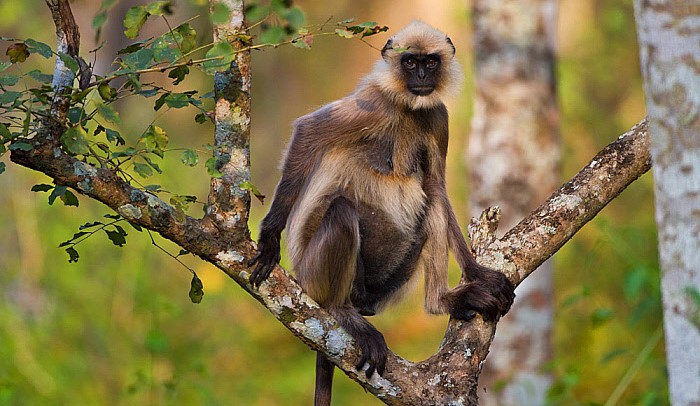
The crestless langur is a medium-sized primate, recognizable from S. priam by its backward-looped tail. It has a brownish streak running between the eye and ear. The subspecies differ in coat coloration and the amount of black on their limbs.
S.h. achates displays a brownish-orange coat, whereas S.h. iulus is darker.
S.h. hypoleucos features dark limbs extending to the elbow and thigh, with no traces of orange. The contentious S.h. aeneas is characterized by dark fur that reaches the shoulders and some orange hues not present in S.h. hypoleucos.
S.h. achates ranges from south of the Narmada River or Baruch in Gujarat down to Nagarhole in Karnataka. S.h. iulus extends from Bhimashankar in Maharashtra through the Konkan to Coorg, while S.h. hypoleucos is found from south of Shimoga to the Brahmagiris and Wayanad in Kerala.
i. Nepal Gray Langur (Semnopithecus schistaceus)

This langur, known for its mane and pale paws, closely resembles the Terai langur but can be distinguished by its larger body size and darker, mauvish-brown back, in contrast to the grayish back of S. hector. Its underbelly is lighter, appearing almost white, and the ruff around the head is more pronounced at higher altitudes. This species is found in Himachal Pradesh, southwestern Jammu and Kashmir, Sikkim, and Uttarakhand.
j. Northern Plains Gray Langur (Semnopithecus entellus)
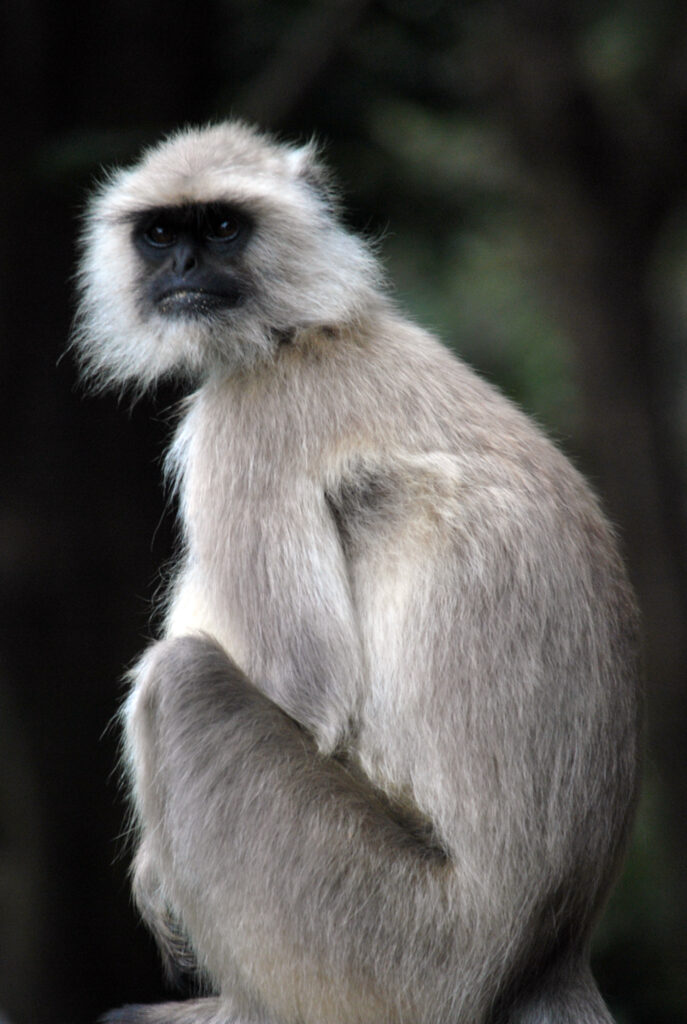
The most widely distributed langur in India, it is a crestless, medium-sized primate with a yellowish-brown or pale orange coat, buff on the chest. It has black paws up to the wrist and a forward-looped tail, distinguishing it from langurs south of the River Tapti, which have a backward-looped tail.
Compared to the Himalayan langur, it is smaller, lacks a mane and mustachial stripe, and features a grayish-black back. This species is distributed throughout northern India, south of the Ganges River, and west of Bikaner in Rajasthan, though it is missing in much of Saurashtra and Kutch in Gujarat.
It can be found in eastern Gujarat, Madhya Pradesh, southern Bihar, Jharkhand, West Bengal, Chhattisgarh, northeastern Maharashtra, and Odisha. In the southwest, its range extends to the Narmada River, while in central India, it reaches the Godavari River. In the southeast, it extends as far as the Krishna River.
3. MACAQUES
Macaques are old world monkeys , found across Asia, North Africa . These are highly adaptable monkeys living in deep forests to the urban cities, they are omnivores feeding on fruits, leaves, insects, seeds and sometimes human provided food, these species are often studied for their high intelligence , social dynamics, and interaction with humans, there are 10 species of macaques in India, they are
a. Arunachal Macaque (Macaca munzala)
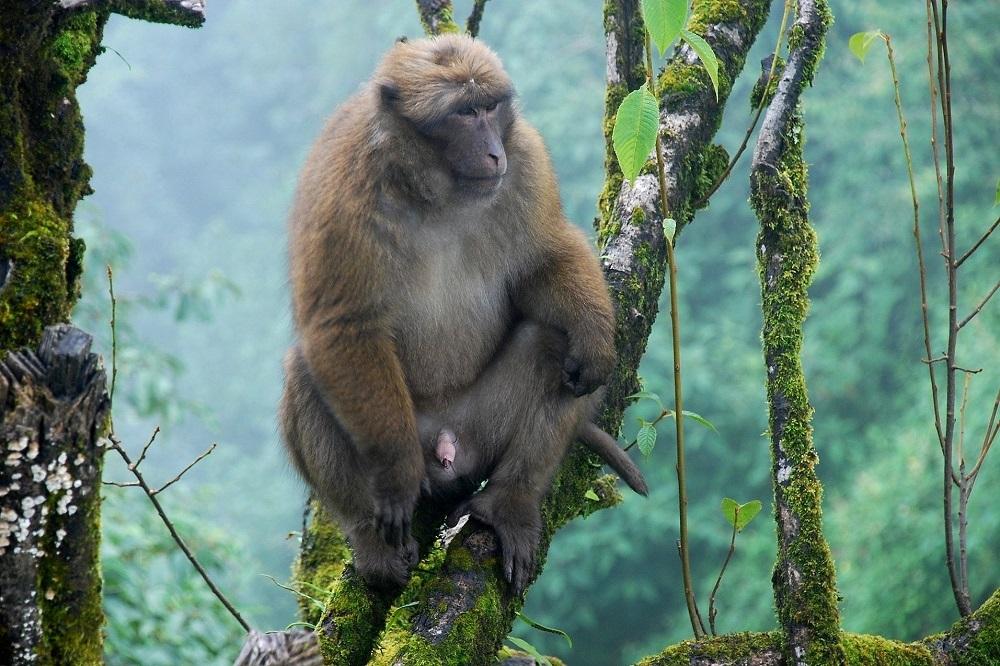
The species name originates from “mun zala,” meaning “deep forest monkey,” which reflects the name used by the Monpa people of West Kameng and Tawang. Unlike the Assamese macaque, this monkey has a dark brown face, a muscular jaw, and lacks a beard.
It also features a shorter tail and a distinct dark patch of hair on its head, often bordered by lighter strands. Many macaques have dark markings that extend from their eyes to their ears, along with a light collar. Juveniles have a slender, hairless tail. This species is found in western Arunachal Pradesh, particularly in Tawang and West Kameng.
b. Lion-tailed Macaque (Macaca silenus)

The Lion-tailed Macaque can be easily recognized by its long gray facial mane and medium-length tail, which features a distinctive tuft of longer hair. This medium to large forest macaque, native to southern India, has a dark, glossy coat, with females typically smaller than males.
In Karnataka, they inhabit the Siddapur forest range north of the Sharavati River, as well as the Mookambika, Someshwara, Kudremukh, and other forests south of the river, including the Charmadi Hills and Kodagu region.
In Kerala and Tamil Nadu, their range includes areas like Kotiyur-Periyar-Manjeri-Kovilakam, Silent Valley, New Amarambalam, Siruvani-Attapadi, the Anamalais, Munnar, Cardamom Hills, Periyar, and regions south of Achenkoil-Ashambu. Additionally, some populations are found along the Western Ghats.
c. Long-tailed Macaque (Macaca fascicularis)

Commonly found in Southeast Asia, this monkey is known as the Crab-eating Macaque. Its subspecies M.f. umbrosa, which inhabits the Nicobar Islands, is a moderately sized primate with a mixed olive-brown coat that is darker than that of the bonnet macaque. It has a long tail, sturdy legs, and a robust body, along with prominent cheek whiskers.
Males are characterized by their distinctly patterned scrotum. They are found on Great Nicobar, Little Nicobar, and Katchal, which are part of the Nicobar Islands, marking the southern tip of its range that extends throughout Southeast Asia.
d. White-cheeked Macaque (Macaca leucogenys)

Morphologically, this species is distinct from others in the ‘sinica’ group due to its dark dorsal fur, hairy underside, striking white whiskers, rounded face with dark skin, and long, thick neck hair. While they have been observed in Arunachal Pradesh, not much is known about their overall distribution in India.
e. Bonnet Macaque (Macaca radiata)
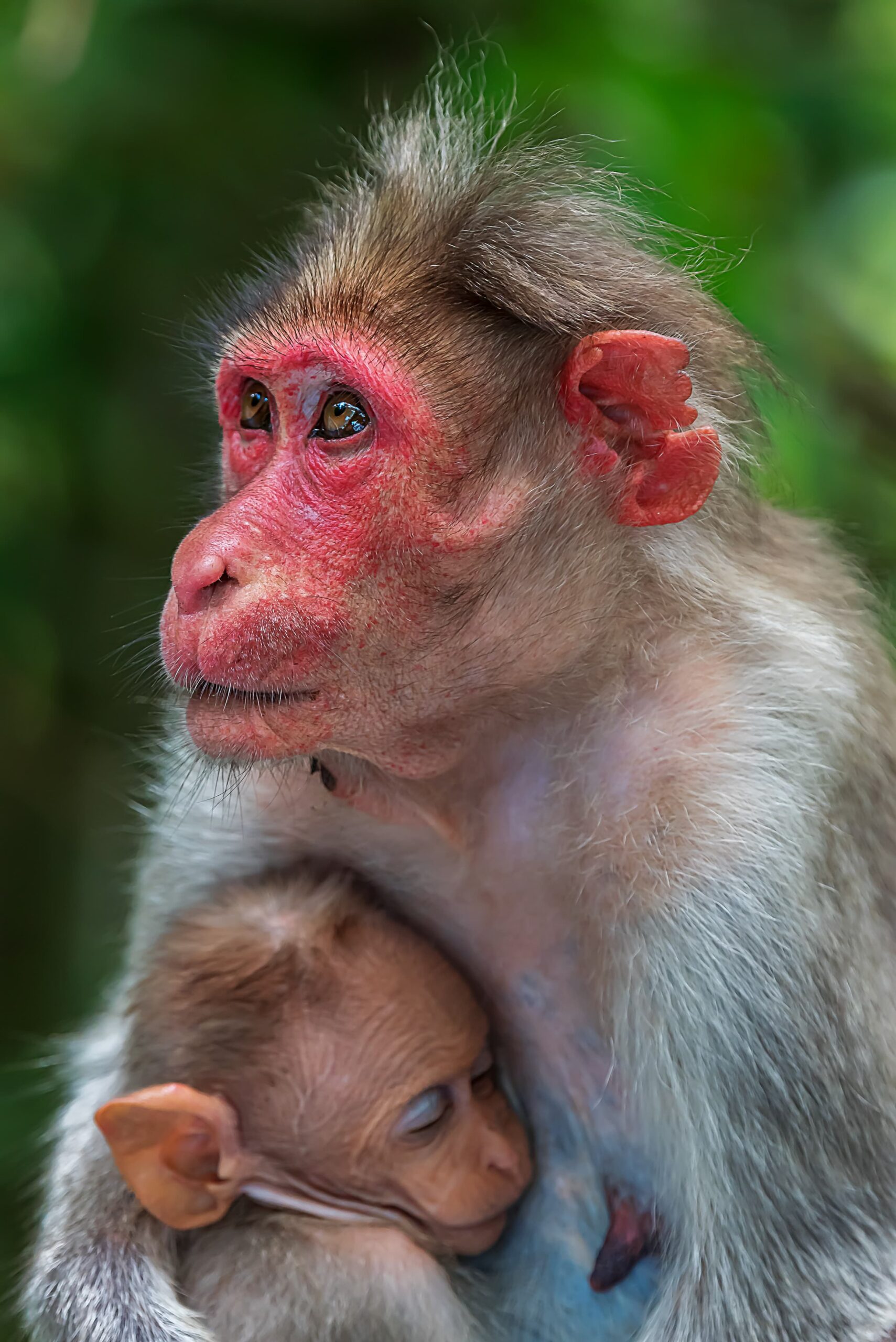
This moderately sized monkey is a familiar commensal species found in southern India. It is easily identified by two prominent features: a cap or tuft of long hair that forms a distinct swirl and a tail that exceeds the length of its body. Its back, limbs, and tail are dark greyish-brown, transitioning from a glossy brown in winter to a rough buff-grey during the summer months.
Found throughout southern India, this species extends to the northern reaches of the Western Ghats, specifically near Pune in Maharashtra to the southwest and north of the Velikonda Range in the Eastern Ghats to the southeast.
f. Northern Pig-tailed Macaque (Macaca leonina)
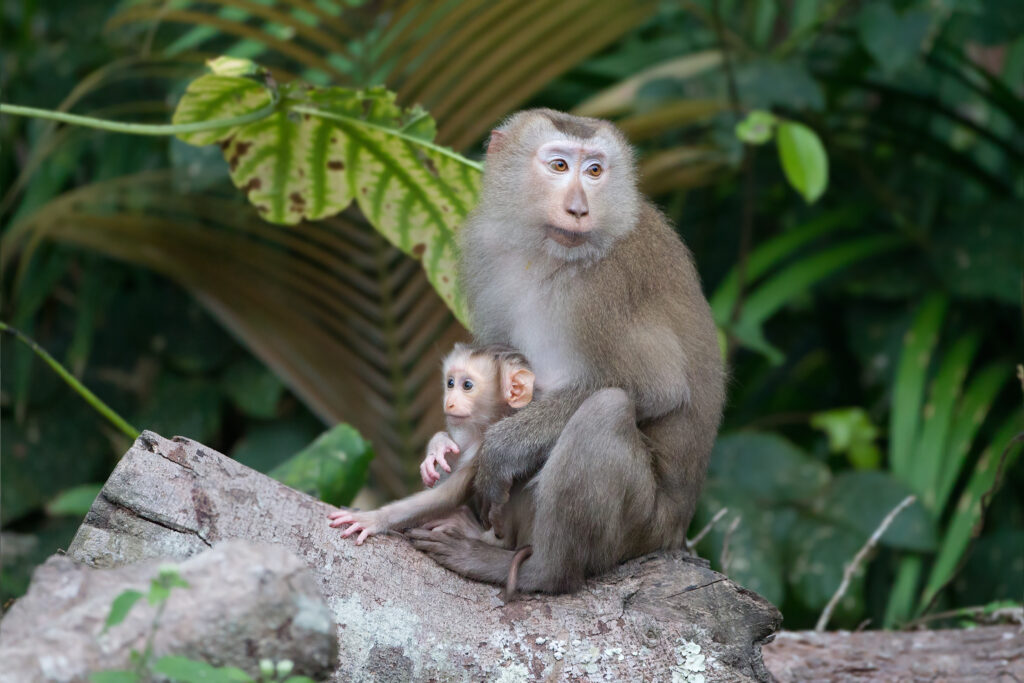
The Pig-tailed Macaque is a unique forest monkey characterized by its dark, short hair that is parted in the middle and a short, upright tail that curls at the tip. Its fur varies from olive-brown to golden, featuring a white underside and occasional red streaks between the eyes and ears. Males are typically larger than females, displaying sexual dimorphism. This species is found throughout northeastern India, south of the Brahmaputra River.
g. Stump-tailed Macaque (Macaca arctoides)
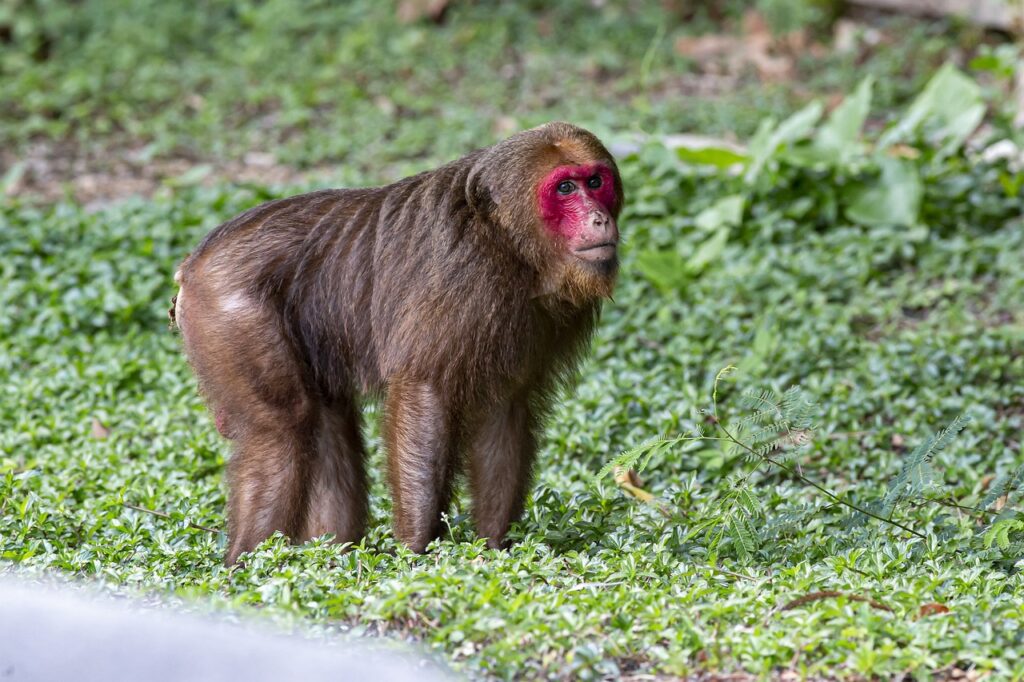
This robust monkey, known as the Bear Macaque, is the largest macaque species in India. It features a distinctive crown of hair that flows back from a central swirl, along with long cheek hair that forms a beard-like ruff. Its prominent cheek pouches are a notable characteristic, and the face is reddish-pink, deepening with age.
Infants are whitish-golden, changing to brown within two to three months. With the shortest tail among macaques, this species is primarily terrestrial. Males can be recognized by their larger size, reproductive organs, and bigger teeth. They inhabit all of Northeast India, south of the Brahmaputra River.
h. Assamese Macaque (Macaca assamensis)

The Assamese Macaque is bulky forest macaque with a brownish-grey coat and a lighter underside. Its back fur varies from dark chocolate-brown to lighter shades, with the lower body usually being darker.
Although it resembles the Rhesus Macaque, it lacks the orange hue on its rear and has a different tail position. Adults are characterized by a prominent beard, long cheek hair, and white eyelids, while males have a pinkish-white scrotal sac and glans.
The subspecies primarily differ in tail length: M.a. pelops has a longer tail, whereas M.a. assamensis has a shorter one. M.a. pelops is found in western Arunachal Pradesh, central Assam, Sikkim, and northern West Bengal, while M.a. assamensis inhabits eastern Arunachal Pradesh.
i. Tibetan Macaque (Macaca thibetana)

The Tibetan macaque is a large primate recognized by its short, stubby tail. It has a dark brown upper body and a lighter buff or gray underside, with a pale brown crown that features a small whorl of short hairs. This species boasts long, thick fur, distinguished by its bushy, pale beard and prominent whiskers on its cheeks. While it has been observed in certain areas of northeastern India, little is known about its overall distribution in the country.
j. Rhesus Macaque (Macaca mulatta)

These monkeys are the most common primate in India and are often found near human settlements. Their fur varies from thick and dark in Kashmir to sparse and sandy in Rajasthan, with a distinctive orange tint on their rear.
The Rhesus Macaque has a moderately long tail held upright with a slight curve at the tip. Female estrus and male breeding seasons are marked by reddish skin on their rumps and flushed faces. Females are smaller and can be recognized by their prominent mammary glands.
This species is found throughout northern India, except in the trans-Himalayan cold deserts, high-altitude Himalayas, and the hot Thar Desert. Traditionally believed to be confined to the southern boundaries of the Tapti and Godavari rivers, recent studies indicate that they are encroaching into Bonnet Macaque territories in the southeast, suggesting an expansion of their range further south.
Ecological Importance of primates in india
Primates are not just fascinating creatures; they are also vital to the health of their ecosystems. As seed dispersers, they contribute to forest regeneration, helping to maintain the biodiversity of the areas they inhabit. Their foraging activities also affect the structure of vegetation, indirectly supporting a wide range of other species.
Cultural & Scientific Significance

In India, primates are deeply embedded in the cultural and religious fabric. For instance, the Hanuman Langur is considered sacred, often associated with the deity Hanuman. This cultural reverence can sometimes lead to conflicts, especially in urban areas where these primates come into close contact with humans.
From a scientific perspective, studying primates offers valuable insights into human evolution, behavior, and health. India’s primates have been subjects of extensive research, helping scientists understand social structures, communication, and even disease transmission.
Conservation Challenges
Despite their ecological and cultural significance, India’s primates face numerous threats. Habitat loss due to deforestation, agriculture, and urbanization is the most significant challenge. Additionally, hunting and the illegal wildlife trade pose serious risks, particularly for species like the Hoolock Gibbon and the Slender Loris.
Climate change also threatens primate habitats, especially in sensitive regions like the Western Ghats and the Northeastern states. As temperatures rise and rainfall patterns shift, the availability of food and shelter for these species is impacted, leading to population declines.
Provisioning macaques and langurs, often done in India under the guise of religious beliefs, is a harmful practice that disrupts the natural foraging behavior of these primates and leads to serious consequences. Attracted to human settlements and garbage dumps by food, these animals are exposed to and spread various contagious bacterial and viral diseases.
This unnatural dependency fuels escalating human-wildlife conflicts, where primates frequently raid crops, damage property, and pose health risks. As their aggression increases, frustrated communities may resort to illegal and harmful measures, further endangering both the animals and themselves.
Such provisioning is not only ecologically damaging but is also a punishable crime under wildlife protection laws. Addressing this issue requires better wildlife management, public education on the dangers of feeding wildlife, and stricter law enforcement to protect both humans and these animals. It’s essential to respect wildlife by allowing them to find food naturally in their habitats, thus preserving the delicate balance of our ecosystems.
Conservation Efforts and the Way Forward
Conservation efforts in India are multi-faceted, involving habitat protection, legal frameworks, and community engagement. National parks and wildlife sanctuaries, such as the Silent Valley National Park in Kerala and the Namdapha National Park in Arunachal Pradesh, play a crucial role in protecting primate habitats.
Moreover, conservationists emphasize the importance of research and monitoring to understand primate populations better and to develop effective strategies for their protection. Public awareness campaigns and involvement of local communities are also key to ensuring the long-term survival of these species.
Protecting Our Primate Heritage
India’s primates are not just symbols of the country’s rich biodiversity but are also integral to the ecological and cultural landscapes. Protecting them requires a concerted effort from all sectors of society, including governments, scientists, and local communities. By understanding and appreciating the role these animals play, we can work towards ensuring that they continue to thrive in the wild for generations to come.
Written by Waghoba Eco Lodge Team, Pugdundee Safaris
Further Reading/References:
- Ghosh, A., Dalui, S., Mukherjee, T., Joshi, B. D., Singh, S. K., Maheswaran, G., … & Thakur, M. (2022). Serendipitous discovery of white-cheeked macaque (Macaca leucogenys) from Arunachal Pradesh, India. Animal Gene, 23, 200124.
- Ghosh, A., Sharma, L. K., & Thakur, M. Two Y‐chromosomal lineages in white‐cheeked macaque (Macaca leucogenys) indicate a possible male‐mediated introgression in ‘sinica’group macaques. Journal of Biogeography.
- Kumar, R. S., Mishra, C., & Sinha, A. (2005). Discovery of the Tibetan macaque Macaca thibetana in Arunachal Pradesh, India. Current Science, 88(9), 1387-1388.
- Menon, V. (2023). Indian mammals: a field guide. Hachette India.
- Singh, M., Singh, M., Kumara, H. N., Chetry, D., & Mahato, S. (2020). A history of primatology in India (In memory of Professor Sheo Dan Singh). Journal of Threatened Taxa, 12(13), 16715-16735.
- Trivedi, M., Manu, S., Balakrishnan, S., Biswas, J., Asharaf, N. V. K., & Umapathy, G. (2021). Understanding the phylogenetics of Indian hoolock gibbons: Hoolock hoolock and H. leuconedys. International Journal of Primatology, 42(3), 463-477.
- https://india.mongabay.com/2021/04/not-two-only-one-species-of-hoolock-gibbon-in-india-study/
- https://www.inaturalist.org/taxa/54866-Macaca-munzala


